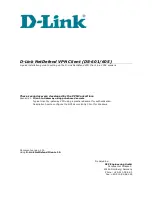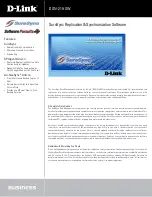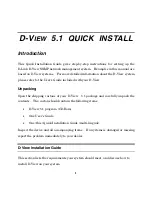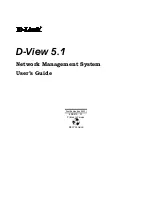
NetAtlas Enterprise Ethernet Switch Manager User’s Guide
165
Chapter 18 IP Configuration
18.2 OSPF
OSPF (Open Shortest Path First) is a link-state protocol designed to distribute routing
information within an autonomous system (AS). An autonomous system is a collection of
networks using a common routing protocol to exchange routing information.
OSPF offers some advantages over traditional vector-space routing protocols (such as RIP).
The following table summarizes some of the major differences between OSPF and RIP.
18.2.1 OSPF Autonomous Systems and Areas
An OSPF autonomous system can be divided into logical areas. Each area represents a group
of adjacent networks. All areas are connected to a backbone (also known as area 0). The
backbone is the transit area to route packets between two areas. A stub area, at the edge of an
AS, is not a transit area since there is only one connection to the stub area.
18.2.2 Interfaces and Virtual Links
An OSPF interface is a link between a layer 3 device and an OSPF network. An interface has
state information, an IP address and subnet mask associated with it. When you configure an
OSPF interface, you first set an interface to transmit OSPF traffic and add the interface to an
area.
Direction
The
Direction
field controls the sending and receiving of RIP packets. When set to:
•
Both -
the switch will broadcast its routing table periodically and incorporate the RIP
information that it receives.
•
Incoming -
the switch will not send any RIP packets but will accept all RIP packets
received.
•
Outgoing -
the switch will send out RIP packets but will not accept any RIP packets
received.
•
None
-
the switch will not send any RIP packets and will ignore any RIP packets received.
Version
Select the RIP version from the drop-down list box. Choices are
RIP-1
,
RIP-2B
and
RIP-
2M
.
Apply
Click
Apply
to save the changes.
Table 85
IP Configuration: RIP (continued)
LABEL
DESCRIPTION
Table 86
OSPF vs. RIP
OSPF
RIP
Network Size
Large
Small (with up to 15 routers)
Metrics
Bandwidth, hop count, throughput, round
trip time and reliability.
Hop count
Convergence Fast
Slow
Summary of Contents for NETATLAS ENTERPRISE -
Page 1: ...NetAtlas Enterprise Ethernet Switch Manager User s Guide Version 1 02 1 2006 ...
Page 21: ...NetAtlas Enterprise Ethernet Switch Manager User s Guide 21 List of Tables ...
Page 27: ...NetAtlas Enterprise Ethernet Switch Manager User s Guide 27 Chapter 1 Introduction ...
Page 35: ...NetAtlas Enterprise Ethernet Switch Manager User s Guide 35 Chapter 2 Switch Manager ...
Page 45: ...NetAtlas Enterprise Ethernet Switch Manager User s Guide 45 Chapter 3 EMS Main Window ...
Page 67: ...NetAtlas Enterprise Ethernet Switch Manager User s Guide 67 Chapter 5 View ...
Page 91: ...NetAtlas Enterprise Ethernet Switch Manager User s Guide 91 Chapter 9 Fault ...
Page 99: ...NetAtlas Enterprise Ethernet Switch Manager User s Guide 99 Chapter 10 Maintenance ...
Page 103: ...NetAtlas Enterprise Ethernet Switch Manager User s Guide 103 Chapter 11 Tools ...
Page 109: ...NetAtlas Enterprise Ethernet Switch Manager User s Guide 109 Chapter 12 Device Menu Overview ...
Page 119: ...NetAtlas Enterprise Ethernet Switch Manager User s Guide 119 Chapter 13 System Configuration ...
Page 133: ...NetAtlas Enterprise Ethernet Switch Manager User s Guide 133 Chapter 14 Switch Configuration ...
Page 191: ...NetAtlas Enterprise Ethernet Switch Manager User s Guide 191 Appendix A SNMPc Network Manager ...
Page 193: ...NetAtlas Enterprise Ethernet Switch Manager User s Guide 193 Appendix B ...
















































